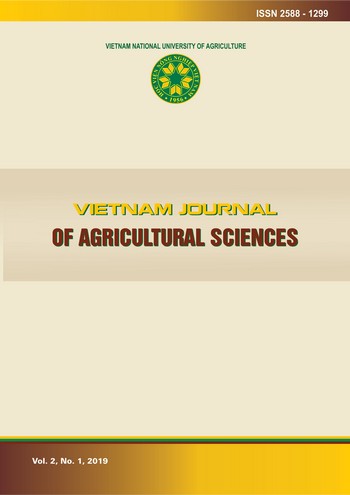Determination of Optimal Levels of Energy, Protein, and Fiber in the Diets of New Zealand White Growing Rabbits Based on Nutrient-Response Models
Abstract
A study was conducted to estimate the optimal levels of energy, protein, and fiber in the diets of New Zealand White (NZW) growing rabbits fed on fresh green forage available in North Vietnam. Mathematical modelling of nutrient-response curves was applied for the study. A total of 125 male growing rabbits at 6 weeks of age were randomly divided into 25 groups of 5 each to be fed on diets with an array of different levels of metabolizable energy (ME), crude protein (CP), and acid detergent fiber (ADF) by means of varying the ratio between fiber rich grasses, viz. elephant grass (Pennisetum purpureum), Setaria grass (Setaria sphacelata), or Para grass (Brachiaria mutica), and protein rich forages, viz. water spinach (Ipomoea aquatica) vines, sweet potato (Ipomoea batatas) vines, or Trichantera leaves (Trichanthera gigantea), in the basal diets. The average daily gain (ADG) and feed conversion ratio (FCR) were used as key responses of the rabbits to varied levels of ME, CP, and ADF in the diets. The results showed that the levels of ME, CP, and ADF in the diets strongly affected the ADG and FCR of the rabbits following curvilinear patterns with the highest ADG and lowest FCR when the diet contained 2106-2162 Kcal ME kg-1 DM with 16.5-16.8% CP and 21.9-22.4% ADF. Therefore, these levels of nutrients were considered to be optimal in the diets of NZW growing rabbits fed on local forages.
điểm /
đánh giá
Published
2020-01-14
Issue
Section
ANIMAL SCIENCE – VETERINARY MEDICINE – AQUACULTURE

